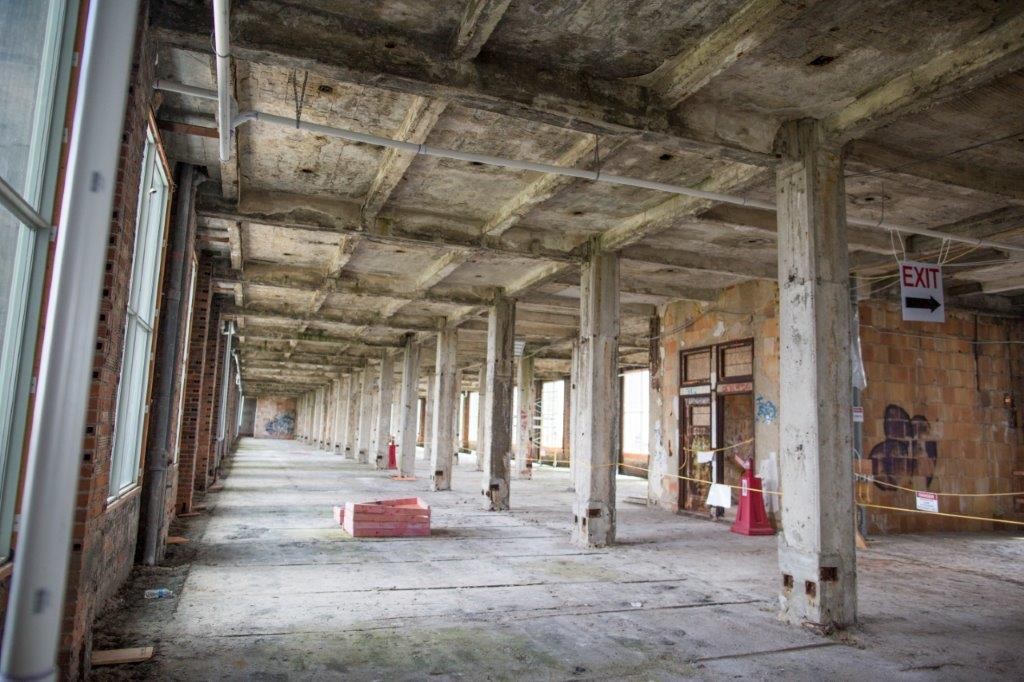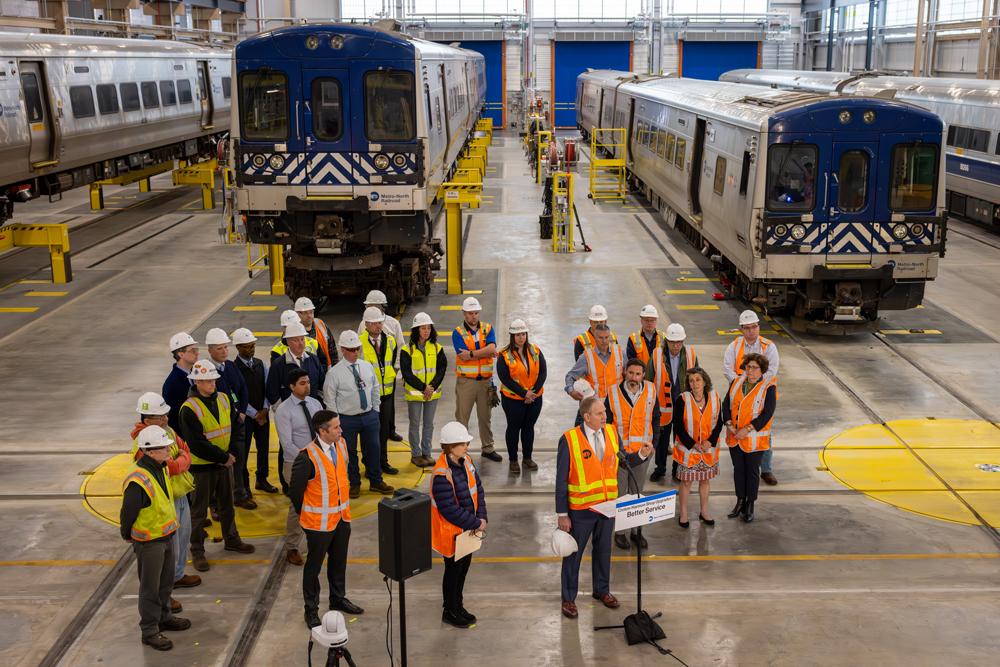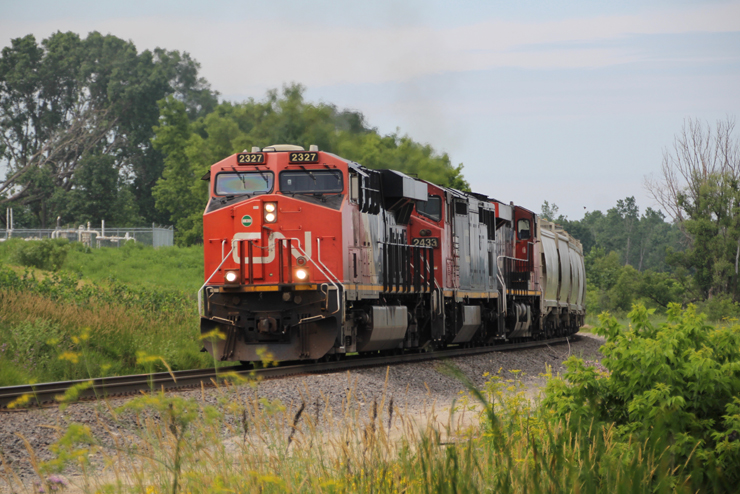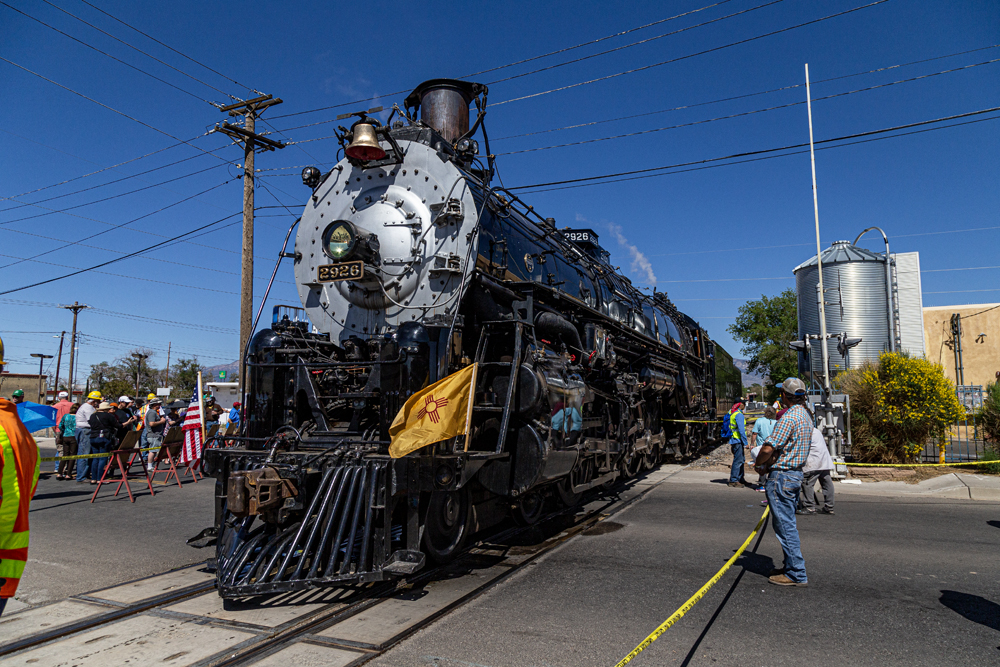Scaffolding will be erected around the 15-floor tower beginning in June, followed by the Grand Lobby in the fall. Workers will spend the next two to three years removing bricks to fix the steel framework that sits behind, then cleaning, repointing and replacing the damaged terracotta, limestone, and brick that make up the station’s exterior.
Ford began the three-phase renovation project in December as part of its plan to make Michigan Central Station the centerpiece of a new innovation hub in Corktown that will bring together employees and other partners, entrepreneurs and businesses to shape the future of mobility.
The first phase of construction involved winterizing, drying out and securing the 640,000-square-foot train station to begin reversing 30 years of extensive water damage and decay. Workers installed temporary roofing and plumbing systems; to date, they have removed 227,000 gallons of water from the building. The building will continue to dry out naturally over the next few years, with temporary heating added in the fall to help the process.
“We’ve made huge strides in the first 6-months of construction thanks to the multiple contractors and teams onsite who are working together to get the job done correctly and safely,” says Richard Bardelli, Ford’s construction manager for the project. “Their hard work and collaboration is making a complicated job a whole lot easier.”
With most of the winterization and stabilization work completed, the construction team is ready to start fixing the steel structure and repairing the extensive masonry on the tower, waiting room and concourse. The band of steel around the top of the 240-foot-tall structure will also go under inspection. Workers will remove 1,200 feet of cornice, a decorative molding around the top edge of the building, to examine the steel behind it and make repairs. Terracotta cornices will be replaced and 106,000 square feet of roof structure repairs will be completed in this second phase of construction.
Additionally, 1,184 tower windows will be restored to preserve the station’s historic appearance.
In addition to the exterior work, masonry repairs inside the building will focus on the Guastavino tile vaulted ceiling in the former waiting room. One of the train station’s most impressive features, it is made up of 22,000 square feet of clay tiles covering three self-supporting arches.
“Despite having had no roof for decades, the Guastavino ceiling is in surprisingly good shape which is testament to its superior craftsmanship,” Bardelli says. “We installed a temporary roof to protect the arches from further deterioration and we will now be working to install a new copper roof.”
Ford plans to clean all of the restorable Guastavino tiles and replace others. The company has already made an initial order of 5,000 tiles from one of the few manufacturers capable of replicating this important feature. Interior scaffolding will go up early next year to make the repair work possible.
Other artisan work in the former waiting room, concourse and arcade will be taken down and restored or replicated. This includes extensive plaster work and ornamental pieces that decorated the walls and marble columns that were removed during the building’s abandonment.
Original drawings and blueprints will be used to make molds to replicate the decorative pieces. The construction team is working with Ford’s advanced engineering team to explore 3D modeling to replicate unique plaster ornamentation.
The final phase of construction will entail finishing and restoring the interior to get it ready for tenants in 2022 when the station opens to the public once again.
–From a Ford press release















R McG: My analysis as well (less “tighty whities” of course, I appreciate CL’s observations).
RW: Also agree, totally. Ford losing the entire waterfront after investing there in the 60’s, including the recent tear-down of river-front concert hall, could certainly be a reason for Ford buying the MC location as “revenge”.
CL: We hear you, but also acknowledge that such discourse, even though seemingly off-topic, is essential. As a Detroit native, the tread prompted me to dig deeper; without such stats from others, i’d couldn’t validate their statements/assumptions. You are correct though; I often sign-off a thread when it becomes too off-topic. Good observation.
v/r
kip
Charles I think that you are getting your “tighty whiteties” all knotted up for nothing. In about another year, long before the reno is complete, there will be another recession, probably as big as the last one but for different reasons. That will cause auto sales to fall drastically and dry up financing as these things typically do. I would think that after the recovery starts FoMoCo, as you call them, will have lost interest in this building and probably bite the bullet and tear it down. If I were you I would be spending my time getting my investment portfolio in shape for the coming recession and not spend so much time worrying about Ford. They will take care of themselves.
No mention of what kind of rail service will be provided. Is it still rail connected?
But, Charles, it’s Fords way to recover from their mistake, the sale of the RenCen to GM. Now they will be able to say ‘see, we’re in Detriot too, so there’.
David, yes rail connected on a main freight line to Canada.
BRAD You post “They (FoMoCo) deemed that they need this building for many reasons”. Actually they don’t need the building for any reason whatsoever as there have been massive layoffs (starting last week and ongoing) at the Glass House in Dearborn and other white collar locations.
You also post “massive capital projects are typical of automakers”. Yes, in manufacturing. This is an office tower that was obsolete by 1950, in bad shape by 1970, and in ruins by 1990.
Chrysler built its Auburn Hills complex in the 1990’s because it really did need a new location. (Also Chrysler already owned the land, likely the most valuable patch of unused real estate in America.) Mopar’s ancient Highland Park headquarters was hopeless and in a very bad neighborhood. Lee Iacocca’s office was in an old factory building from the dawn of the auto age. Chrysler started from scratch, building a new office tower and tech center from the ground up. None of that applies to FoMoCo in 2019 which is quite well set in Dearborn and Allen Park. The amount of money Chrysler spent for its new Auburn Hills office tower would disappear without a trace into FoMoCo’s Michigan Central boondoggle.
Railfans can love the building (I’m a railfan who does not love the building), but its value to FoMoCo is less than zero. To FoMoCo this building isn’t an asset, it’s a gargantuan liability.
I’m very happy that Ford is saving this building, it is their $$ to spend how they wish. They deemed that they need this building for many reasons. Massive capital projects are typical of automakers. I’m just amazed at the 227k gallons of water removed. A mini Lake Michigan, and probably better then the water in Flint.
Great News!!!!
There is additional information about what Ford has been doing at
https://www.freep.com/story/money/business/2019/05/24/ford-renovation-detroit-train-station-michigan-central-depot/1207596001/
The many off-topic postings once again reveal why the thousands of Trains mag. subscribers neither post nor look at “Newswire.” Those few ruin it for the many.
Steven — I appreciate your list of what you call “many, many significant buildings” that were razed. My appreciation is that you know the history of this great city. Of the ones on your list I’m familiar with (some like the Wolverine Hotel tend to the obscure) I can’t think of one that the city should miss. I can’t think of one on your list of any value. The Uniroyal plant? Seriously? Good riddance. Uniroyal was no better than almost the entire Chrysler empire – Dodge, Plymouth, Chrysler, Eldon Axle, Huber Foundry all gone, only DeSoto was kept and only DeSoto had any architectural significance. Hudson Motors, Kelsey Hayes, Chevy Gear and Axle, I assume gone, I wouldn’t know, I live in Wisconsin. These were industrial hellholes, not historic landmarks.
Fort Street Union Depot (and to the other side of downtown, Brush Street GTW) were of no great architectural value.
Kelvinator Refrigerator, which survived until recently under American Motors and Chrysler and FCA in various significant uses, finally went away. It’s called this: progress. We’d have no place to live if all the old had been kept.
Yes the J. L. Hudson department store was a treasured locale for generations of Detroiters who sat on Santa’s lap each holiday season. Also know this: as to architecture it was an ugly pile of bricks, nothing more; the new building proposed for the site will be awesomely breathtaking.
The Monroe Block is the one on your list that generated much passion. I couldn’t see why. It was nothing more than 19th Century America that gave way to 20th Century America in every city coast to coast. New York City has its United Nations and Chrysler Building and Rockefeller Center and Empire State Building etc. because its equivalent of dozens of Monroe Blocks went away.
Anyway, Steven, we share this: Detroit is awesome. I’m counting the days and hours to my visit next month. The places I will see, like DIA, actually are treasured landmarks. The Uniroyal plant was not.
Charles – Of course your thesis is correct – we’re just debating our views on individual examples. For the ultimate “Monroe Block,” read the text and see the photos in Jill Jonas’ “Conquering Gotham,” as PRR created not only Penn Station, but the yards, etc. necessary for it to function in Manhattan.
Charles, once it’s restored will you keep a vigil with a hammer, angrily smashing the station so that it looks ugly again, since that’s the only thing you will accept?
Also, your comments about historic preservation in Detroit are lazy and inaccurate. Many, many significant buildings were razed after 1960: Kern’s, Crowley’s & Hudson’s stores, Fort St. Union Depot, Brush St. Station, Statler Hotel, Park Avenue Hotel, Tuller Hotel, Madison-Lenox Hotel, Donovan Building, Uniroyal and Cadillac plants, Monroe Block, Cadillac Square Bldg., Wolverine Hotel, Mackenzie Hall, Tiger Stadium, Olympia Stadium, and on and on.
The only major movement to restore large old buildings has occured within the last 15 years or so, with developers like Roseville & Mansur, John Ferchill, Dan Gilbert and others (hardly naive “preservationists”) renovating and MAKING MONEY on formerly abandoned buildings like the Kales, Book-Cadillac, Broderick, Vinton, Free Press, David Whitney, David Stott, Wurlitzer, Book Tower, Metropolitan, etc.
George – The profit margin (if any) from how many Ford vehicles needs to go into just the work in that photo – which is an infinitesimal fraction of the total work inside, outside and site work. BTW, another factor is that this project (like any other) has a taxpayer component.
FoMoCo has invested how many hundreds of millions of dollars over the decades into the Glass House in Dearborn and the nearby facilities to south in Dearborn and Allen Park. Why does it need Michigan Central at any price, let alone countless hundreds of millions. Ford has been focused in Dearborn and Allen Park for our entire lifetimes and more. Why does FoMoCo even need to be in Detroit? FCA is in Auburn Hills and quite happy there, not even close to the central city. GM isn’t about to abandon its tech center in Warren so as to rehab an architectural monstrosity.
I have nothing against Detroit. It’s a great city but Michigan Central isn’t part of that greatness, never was and never will be. Railfans, take off your blinders. New York Central’s stations at Detroit and at Buffalo never were among America’s great train stations. Just because we lost Penn Station doesn’t mean all the rest are the Taj Mahal.
Yes profit margins are thin. Ford has to compete against GM and FCA which already have tech and office facilities. GM and FCA don’t need to pour all their profit and much more into real estate development, like FoMoCo’s scheme in Detroit’s second lousiest (after Packard) megastructure..
Fantastic, good for them!
Charles – We’ll be gentlemen and agree to disagree. Your observation about a “competitive industry where profit margins are thin” brought to mind the recent time when GM went bankrupt and required a, shall I say, questionable legal arrangement to emerge, Chrysler ditto, but not Ford. They must be doing something right, and the vision for the MC Station redevelopment just might turn out to be that way.
Andy, It’s their money plus the usual tax incentives. I’m quite sure their Board of Directors is happy. My concern is the railfan community. Blindly following the historic preservation meme. How many people on this forum have seen the place? Even when it was in better shape, it wasn’t.
George, Me a complainer? I love FoMoCo. We were years ago the proud owners of twin 1999 Mercury Mystiques we named Eleanor Lowthian Clay Ford (her car) and Edsel Bryant Ford (my car.). I’m counting the days ’til next month when I’ll drive and the Edsel B. Ford Freeway (Michigan Trunk Line Highway I-94) and visit the Edsel and Eleanor Ford wing of the Detroit Institute of Arts. My question is, where in the FoMoCo’s budget in a competitive industry where profit margins are thin, is there room for the bottomless pit of this building. (This in a company that is reducing its white collar headcount.) In the building’s best years it was a burden on the New York Central Railroad. This is a train station that never should have been built to this size.
I could show you dozens of major buildings within the Detroit city limits more worthy of preservation.
It would be a large exaggeration, but somewhat on point, to compare Michigan Central to the enormous Packard plant on East Grand Boulevard. Packard has resisted decades of attempts at historic preservation or some sort of useful redevelopment. Actually the complex should have been torn down after Packard ceased production sixty years ago.
After Detroit City Hall was demolished (maybe around 1960) there was a huge movement, continuing to this day, for historic preservation, that every Detroit building of a certain age was untouchable. The result is a city full of white elephants that no one has the money to maintain.
John Privara – I was certain that you had a lock on my 2019 “Bah, Humbug!” award, but Charles is a real bulldog who may overtake you with the sheer volume of his complaining. I’m as proud to drive my Ford car as I am to own UP stock.
Charles, its their money to spend as they see fit.
Re: FoMoCo lays off hundreds of white-collar people in Dearborn so why does it need this uber-expensive space in Detroit?
White-collar people are expendable, and easily replaced by cheaper labor elsewhere. Whereas, when the building is renovated, the FoMoCo executives can bask in the glory of saving a monument to Merican greatness and be remembered in perpetuity for their outstanding civic responsibility.
And, as a reward, they – and their children – will be rewarded with even better seats (than they already have) at any venue where the “people that matter” gather.
FoMoCo lays off hundreds of white-collar people in Dearborn so why does it need this uber-expensive space in Detroit? A company that is in a competitive industry is wasting hundreds of millions of dollars on this decayed, has been, never was, rubbish heap. Why not just use the emptied-out offices in the Dearborn Glass House.
Doug Anderson says post below, “kudos to Ford”. Kudos for what? Bankrupting the company in a hopeless real estate deal.
Whenever I post on this, people ask, Chuckie, Why do you hate that building? I don’t hate it, but neither do I love it. It may be old, it may be historic, but it’s no thing of beauty. And never was. At its heyday it was considered a white elephant.
I’ve worked with buildings of similar vintage in Boston, most notably the former Filenes Department Store, erected in 1912 (I was involved with the restoration and repurposing in 2012). While the main frame is steel, the floors are likely of terra cotta flat arch construction; the columns are wrapped in terra cotta; and it’s all covered with metal lath and plaster. Water absorptive materials. A very difficult project, especially when it’s been weather exposed. Kudos to Ford.
One can think of the restoration of Pennsylvania Station in NYC.
I don’t know about you, but this kind of rescue from the dead makes me feel good, like UP 4014, because something that was iconic once upon a time is returning with a roar. I like the blending of the original plans and modern computer modeling to get the job done.